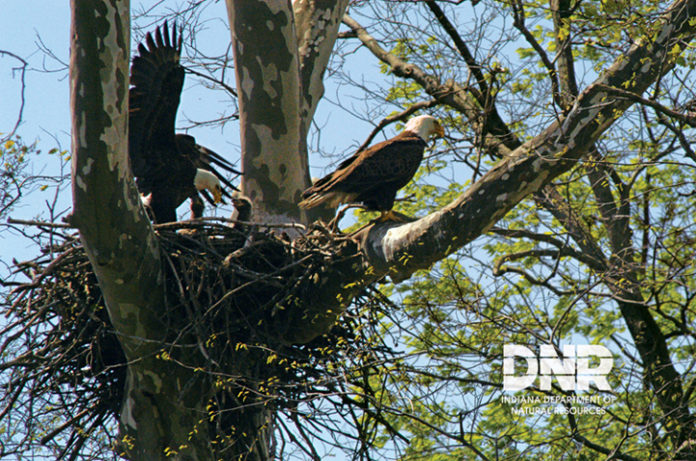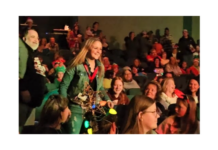One of the original eagles brought to Indiana in the 1980s as part of a restoration program, has been spotted again at Monroe Lake.
Bald eagle C43 is the oldest known bald eagle in Indiana. A 28-year-old bald eagle, she arrived in 1988 as a nestling from Whitestone Harbor, Alaska. Biologists brought C43 and 72 other eaglets to Indiana to start the bald eagle restoration program, which “hacked” or released young eagles at Monroe Lake with the hope that they would return to Indiana to nest.
C43 may still be nesting at Monroe Lake, according to Amy Kearns, assistant nongame bird biologist with the DNR Division of Fish & Wildlife. C43 is the number on a leg band that helps scientists and wildlife watchers identify the bird.
“This bird may be one of the top 10 oldest wild bald eagles in the United States, with only seven other banded eagles reported living to 28 years or more,” Kearns said.
The latest sighting was on Nov. 4 at Monroe Lake by Clare Bozell. This is the second year in a row that Bozell has spotted C43 in the same area at the same time.
C43 was released from the hack tower on Sept. 6, 1988, at Monroe Lake. In January 1989, C43 was sighted in Tennessee at Reelfoot National Wildlife Refuge. From November 1989 to January 1990, C43 was sighted in Kentucky, at Ballard County Wildlife Management Area.
In March 1994, she was sighted in Indiana at her nest on Monroe Lake.
In July 2015, C43 was spotted at Monroe Lake with a brood patch, indicating she may have raised young that summer.
Bald eagles were on the state and federal endangered species list when Indiana began its reintroduction program in 1985. In 1991, the first successful nesting occurred. In 2016, there were an estimated 250-300 eagle nesting territories in Indiana, with 179 bald eagle nests confirmed active.
The bald eagle reintroduction program was the first endangered species restoration project initiated by DNR nongame wildlife staff. This project and ongoing research would not be possible without donations to the Indiana Nongame Fund, the main funding source of all nongame and endangered species research and management.
In 2016, the Nongame Fund took a drastic hit with a 60 percent decline in donations compared to the long-term average. Hoosiers can help by donating a portion of their tax returns to the fund or by donating online. For every $5 donated to the Nongame Fund, another $9 is awarded through federal grants.
Donate online at endangeredwildlife.IN.gov.





